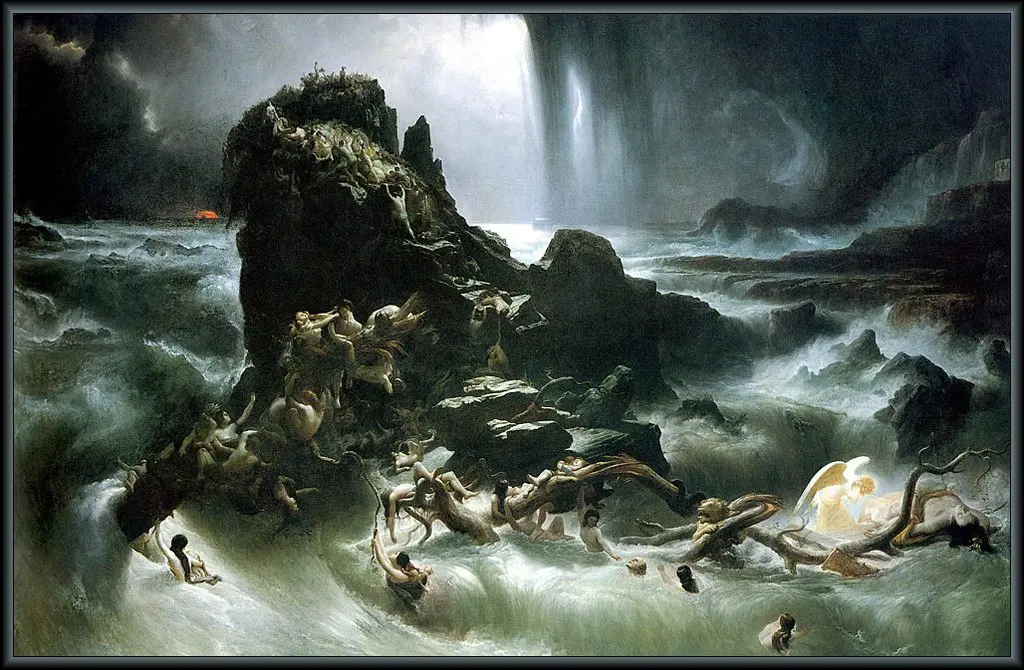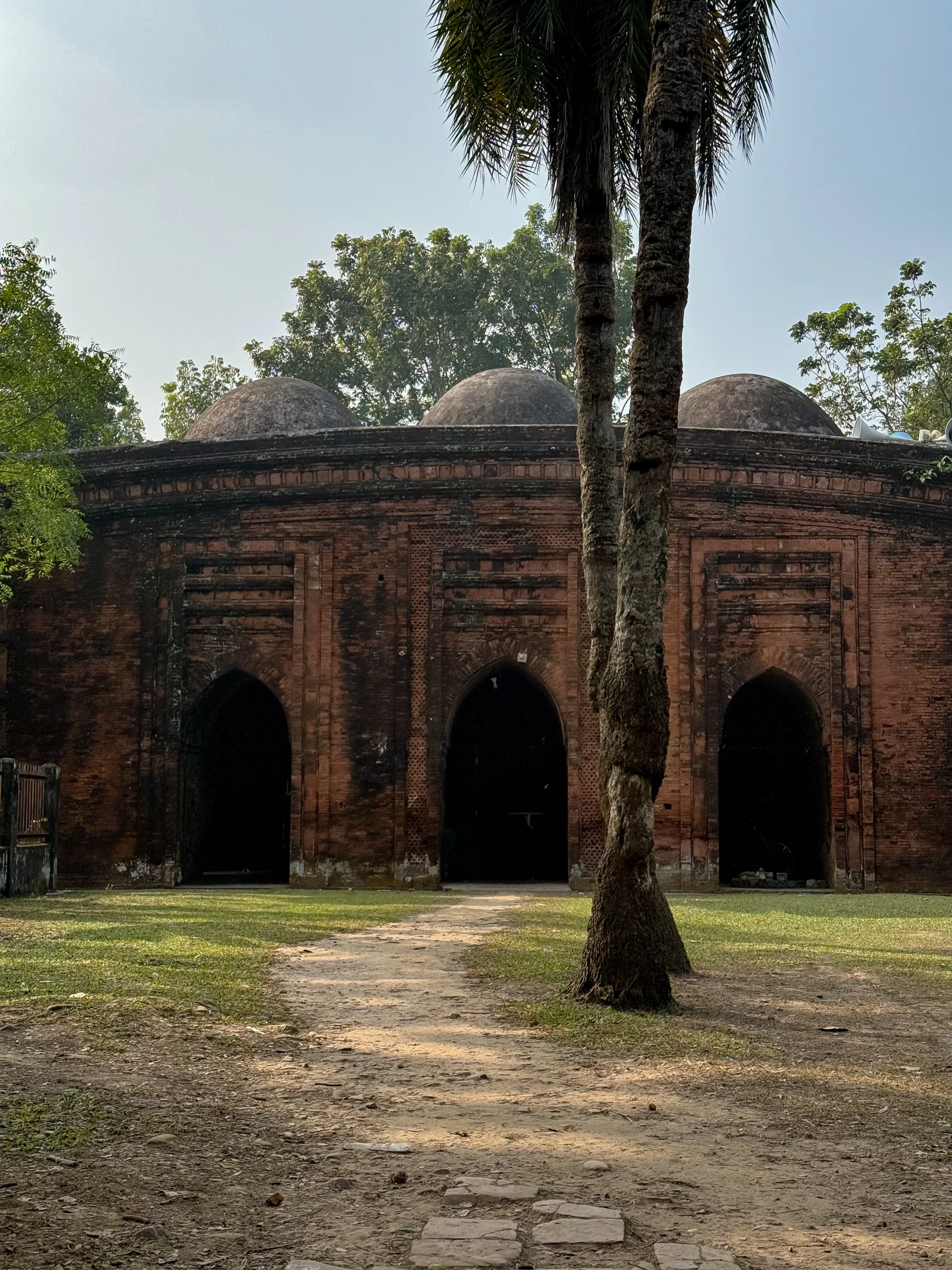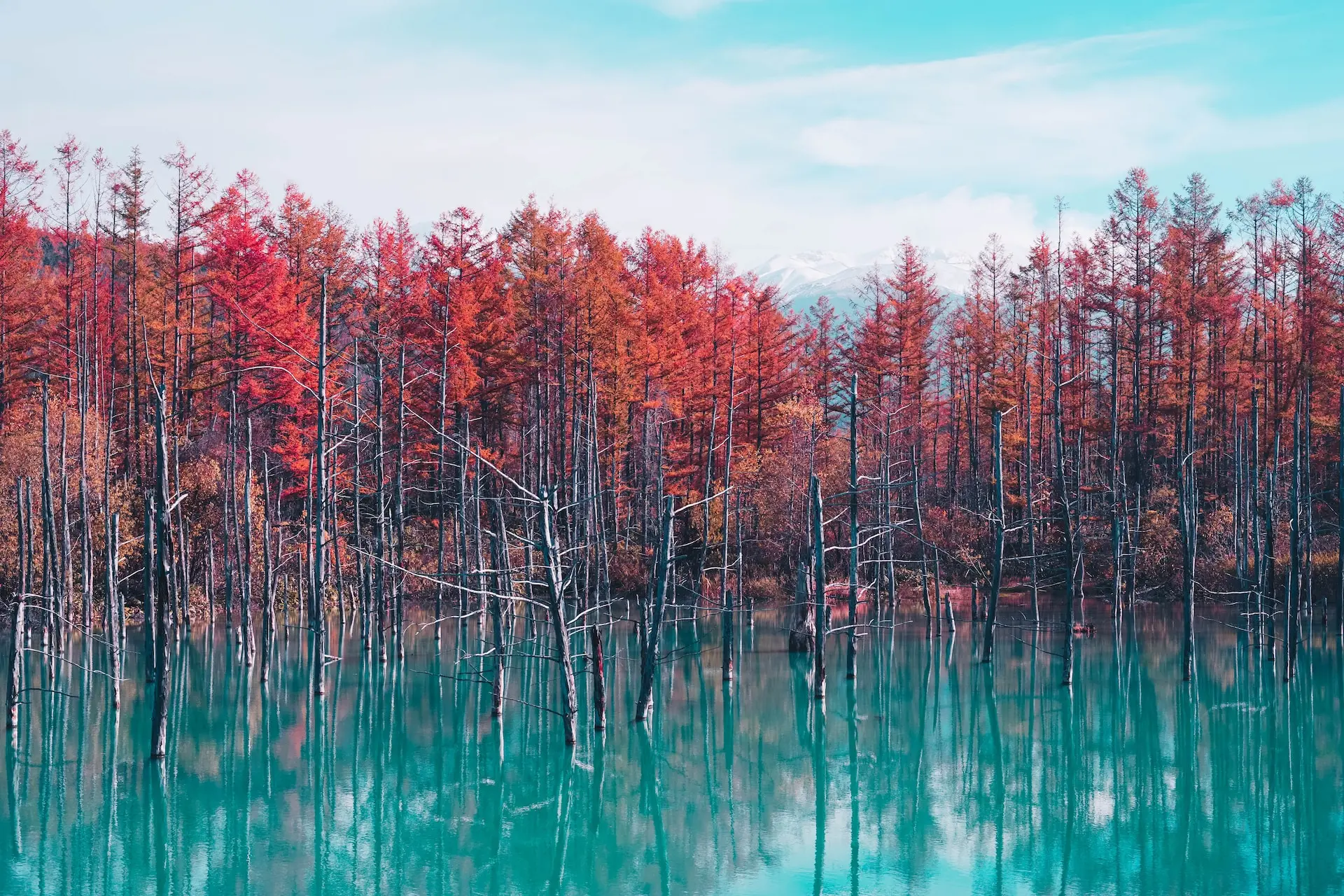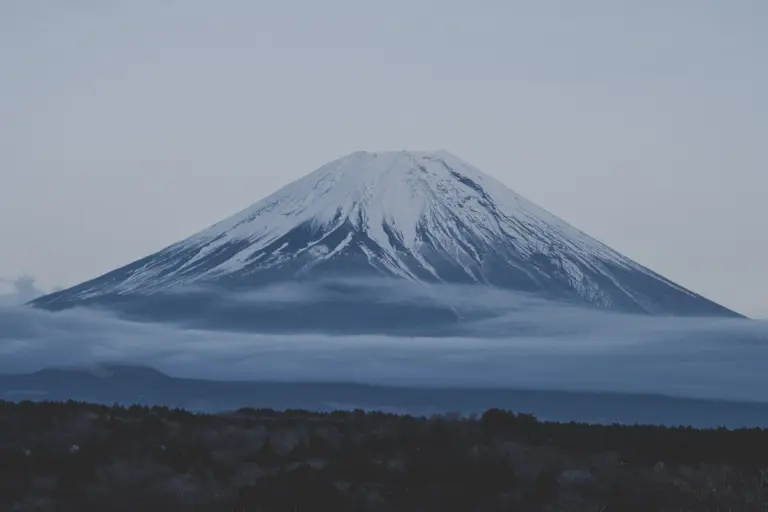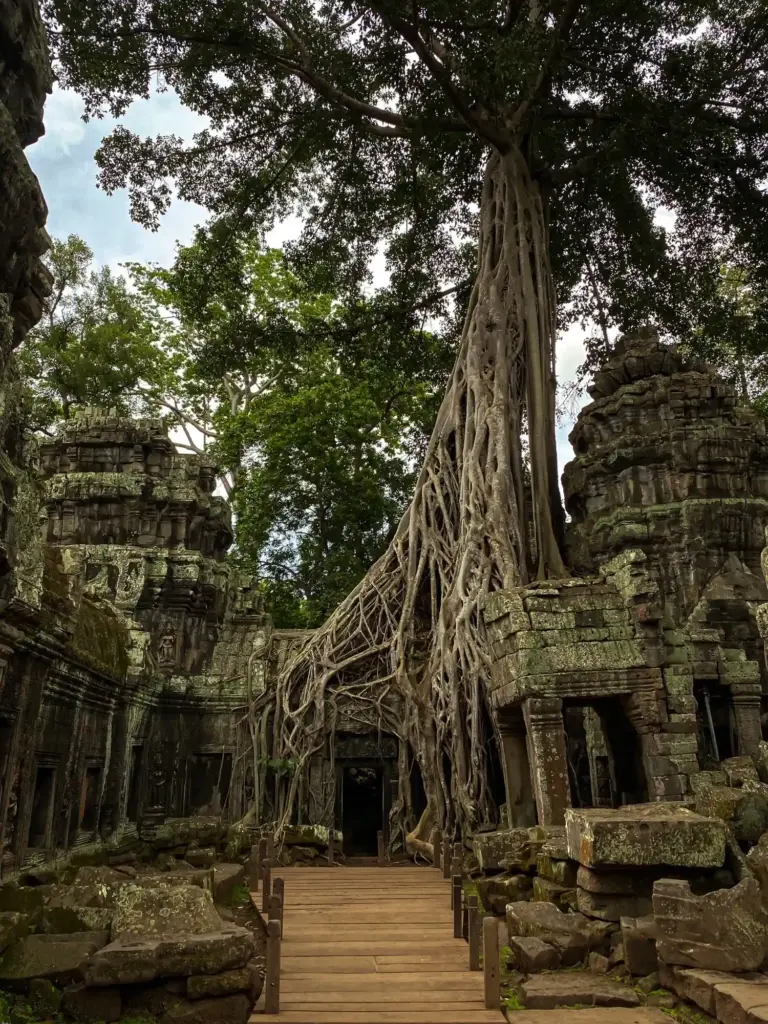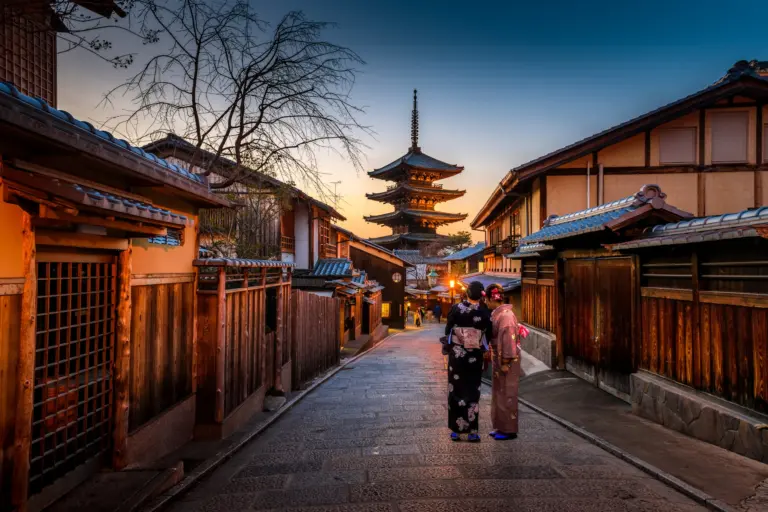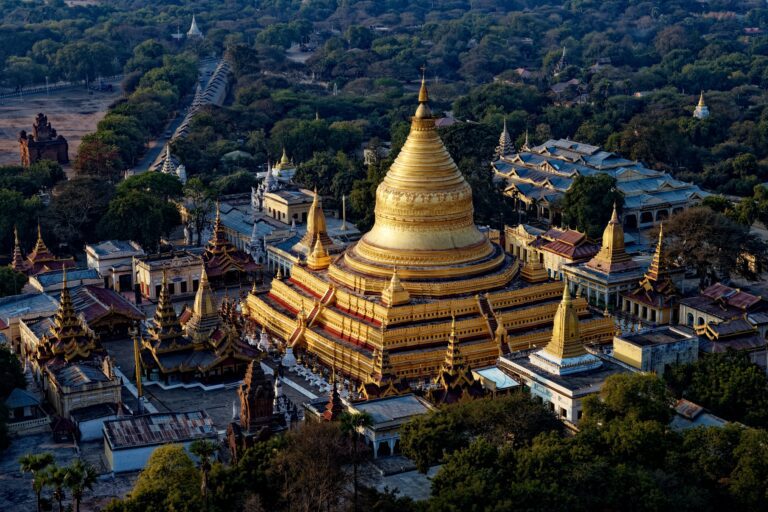Stepping off the plane and into Kuala Lumpur’s bustling airport, I couldn’t help but feel a sense of excitement and wonder. I was quite fortunate to have had a Couchsurfing host waiting for me, he gave me a lot of local cultural insights and really made my stay in Malaysia much more memorable.
As I made my way through the city’s colorful streets, I was struck by the collision of old and new – ancient temples nestled between towering skyscrapers, traditional food markets sitting next to modern shopping malls! I want to bring what I experienced to you through this article which goes through exactly all the places and activities to see and try out in Malaysia’s capital city!
Table of Contents
ToggleHistory of Kuala Lumpur
Kuala Lumpur, or KL, is the capital city of Malaysia. The city was founded in the 1850s as a small mining town at the confluence of the Klang and Gombak rivers. Its name, “Kuala Lumpur,” literally translates to “muddy confluence” in Malay. The area was originally inhabited by indigenous tribes, such as the Orang Asli, until Chinese and Indian migrants arrived in the early 19th century to work in the tin mines.
In the late 1800s, Kuala Lumpur became the center of the Selangor Civil War between two Chinese secret societies fighting for control of the tin mines. The British colonial government intervened and took control of the city in 1896, which eventually led to the development of modern infrastructure such as roads, buildings, and transportation systems.
During World War II, Kuala Lumpur was occupied by the Japanese army and suffered significant damage from bombings. After the war, the city underwent rapid reconstruction and development, with many new buildings and landmarks constructed, including the iconic Petronas Twin Towers.
Malaysian Culture Overview
Just like Singapore, Malaysia is a multicultural country, with a mix of Malay, Chinese, Indian, and indigenous ethnic groups. This diversity is reflected in the country’s cuisine, architecture, customs, and traditions. In just one day you can visit Hindu and Buddhist temples before appreciating Islamic architecture in the beautiful mosques.
The official language of Malaysia is Bahasa Malaysia (Malay language), but English is widely spoken and understood, especially in urban areas. Islam is the predominant religion, followed by Buddhism, Christianity, and Hinduism.
Malaysia’s cultural heritage includes various art forms such as batik, wood carving, and traditional dance forms such as the joget and zapin. If you want a more in-depth look at Malaysian culture and traditions, check out my blog post on this topic where I always dive deeper into the rich history and customs of the countries I visit.
Best Places to Visit in Kuala Lumpur
1. Petronas Twin Towers
As you step into Kuala Lumpur, your eyes will instantly be drawn towards the magnificent and iconic Petronas Twin Towers. Standing at a height of 452 meters (1,483 feet), the twin towers are a true engineering marvel that will leave you awestruck.
Did you know that the Petronas Twin Towers were once the tallest buildings in the world? The towers held this title from 1998 until 2004, and even today they remain with the record of being the tallest twin towers!
If you’re an architecture buff, you’ll be fascinated by the tower’s postmodern design that combines Islamic motifs with contemporary style. You can head to the observation deck on the 86th floor and take in the breathtaking panoramic view of the city. You’ll also find vendors selling these funky camera gadgets to help take “optimal” photos of the towers, it’s really up to you but I don’t think it’s worth it.
Cost: Free, but RM 80 (20 USD) for the Skydeck.
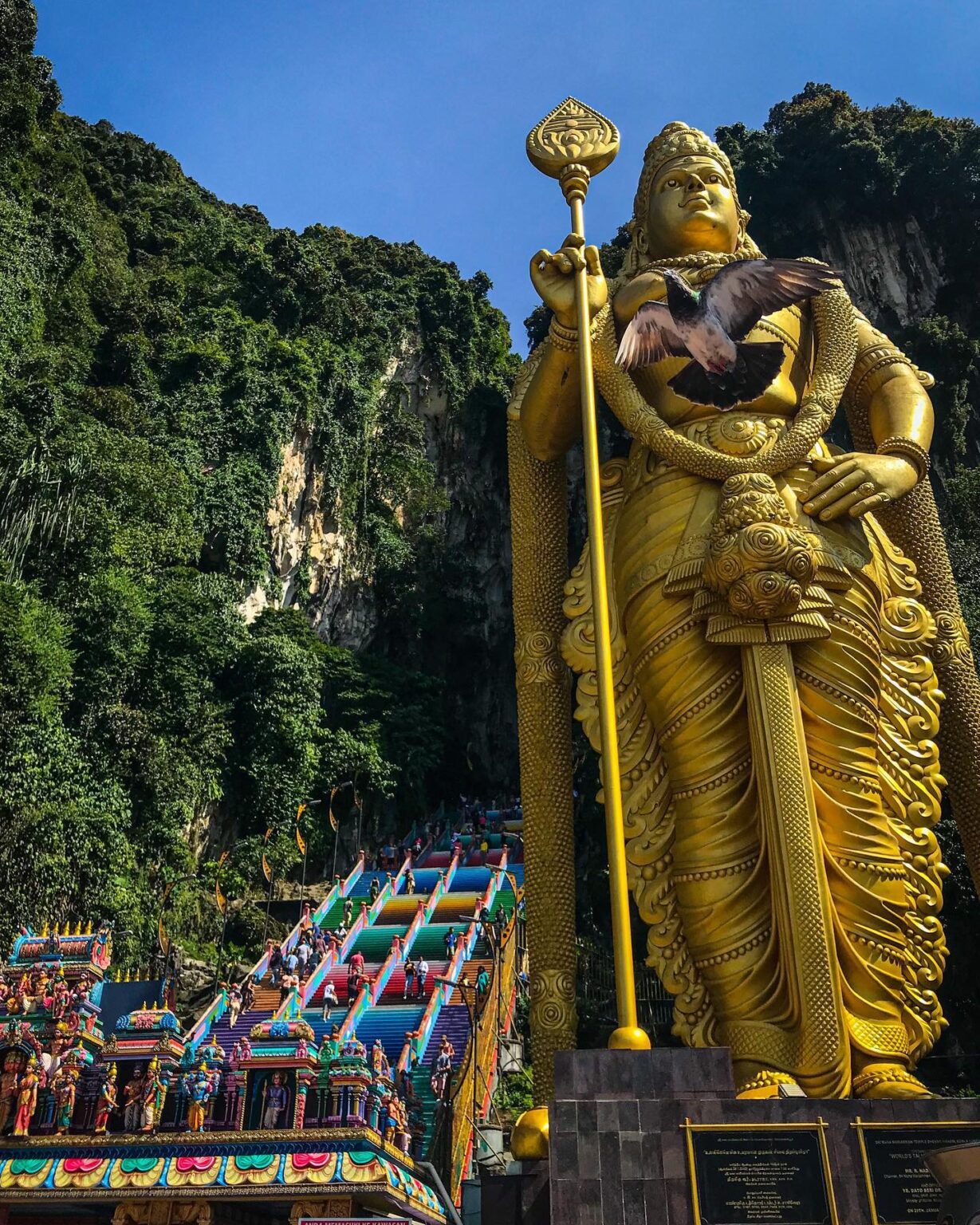
2. Batu Caves
Batu Caves is a must-visit attraction when you’re in Kuala Lumpur. This limestone hill is home to a series of caves and cave temples that are estimated to be around 400 million years old. The most famous of these caves is the Temple Cave, which houses a Hindu shrine dedicated to Lord Murugan (also known as Kartikeya, the son of Shiva and Parvati). You’ll find his giant statue at 42.7 meters (140 feet) right before going up the photogenic rainbow-colored stairs. Be careful not to mess with the monkeys though they can be quite adorable and naughty!
To get to the Temple Cave, you have to climb 272 steps, which can be a challenge, especially in Malaysia’s hot and humid weather but it’s really worth it once you reach the top and into the cooler caves where you’ll find majestic and colorful Hindu temples.
Pro tip: You can store your bag in the nearby shop for a small price and someone will watch over it. It was quite helpful for me to do that as at that time my bag was really heavy and it was already pretty hot as it is. You’ll also be able to explore the caves and temples more leisurely.
Cost: 15 RM (3.5 USD)
3. Masjid Negara
The National Mosque of Malaysia, also known as Masjid Negara, is a significant landmark located in the heart of Kuala Lumpur. It is one of the largest mosques in Southeast Asia and can accommodate up to 15,000 worshippers at a time. The mosque was built in 1965 and is an impressive example of modern Islamic architecture. Non-Muslims are welcome to visit the mosque, but are required to wear appropriate clothing and remove their shoes before entering the prayer hall.
Cost: Free
4. Sultan Abdul Samad Building
The Sultan Abdul Samad Building is one of the city’s most iconic landmarks. Built in 1897, the building served as the administrative center for the British colonial government and has since been repurposed as the home of Malaysia’s Ministry of Communications and Multimedia.
As you approach the building, take a moment to appreciate the stunning architecture. With its distinctive Moorish-style arches and clock tower, the building is a true masterpiece. The intricate details on the façade are a testament to the craftsmanship of the builders who constructed it over a century ago.
Cost: Free
5. Istana Negara
Istana Negara, which translates to ‘National Palace’, is the official residence of the Yang di-Pertuan Agong, the monarch of Malaysia. The Istana Negara was built in 2011 to replace the old palace complex that was built araound 1928 and served as the residence of the Malay rulers before Malaysia gained its independence. The palace’s design is a blend of traditional Malay and Islamic architecture and features multiple golden domes. I accidentally discovered this place after I shared a cab with an Indian family that came from New Zealand and just went with the flow. It’s a very photogenic palace but when we went there, the main gates were closed which I read is quite often. You can wait for the changing of the guards which occurs every hour and explore the nearby gardens in case if you find yourself in a similar situation.
Cost: Free
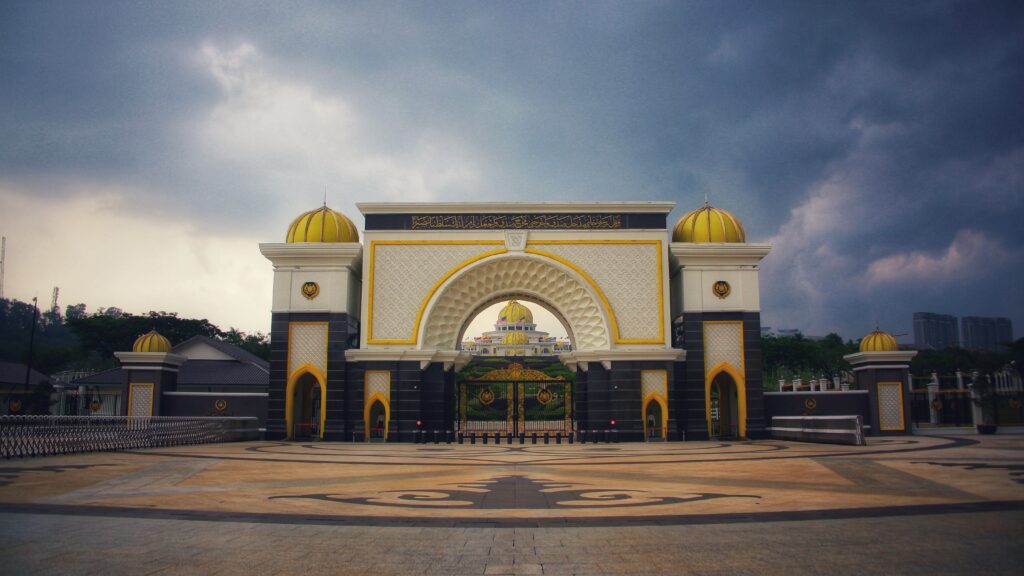
6. Chinatown
No Kuala Lumpur visit is complete without a trip down to Chinatown. Kuala Lumpur’s Chinatown is a place where tradition meets modernity, and where the old and new live in harmony. Head to Petaling Street Market to watch it come alive with the sounds of vendors hawking their wares, the smell of delicious street food wafting through the air, and the colorful sights of lanterns and decorations adorning the buildings.
Steeped with rich history and having been around for generations, it really shows in the architecture, the food, and most of all the people. From the ornate temples to the traditional herbal medicine shops, it’s really the perfect place to soak up Chinese culture in Malaysia. The food scene here is second to none! You can find anything from dim sum to bubble tea. And the best part is that it’s all affordable and mouth-wateringly delicious.
It’s pretty weird for a place that’s always changing and evolving to still carry the same essence it has always had from the very start. It’s a microcosm of Kuala Lumpur itself that’s truly rooted deeply in tradition.
Cost: Free

7. Thean Hou Temple
Thean Hou Temple is a magnificent Chinese temple situated atop a hill. Dedicated to the Goddess of the Sea, Mazu. I actually recommend saving this one for the later part of the day, watching the sunset from above the hill and seeing the temple slowly light up for the night is an amazing spectacle to behold. The red lanterns, once lit up, provide amazing photo opportunities and adds a lot of depth to your photos!
The temple’s architecture is a blend of traditional and modern Chinese styles, with a striking red and gold color scheme. The temple complex features several prayer halls, landscaped gardens, and a turtle pond. The main prayer hall houses a statue of the goddess Mazu, while the upper levels offer stunning views of the city skyline. Make sure to check out the back portion of the temple as there are still a lot more surprises in store!
Cost: Free
Hidden Gems in Kuala Lumpur
8. Sri Maha Mariamman Temple
Sri Maha Mariamman Temple is located in Chinatown and is another excellent place to immerse yourself in the Hindu side of Malaysia. Feast your eyes on the towering gopuram (entrance gate), similar to the Batu Caves this temple has a wonderful ensemble of Hindu deities perched on each layer.
The temple is dedicated to the Hindu goddess Mariamman, who is believed to have the power to cure various diseases and illnesses. One of the most striking features of the Sri Maha Mariamman Temple is its incredible attention to detail. Every inch of the temple is covered in colorful decorations, from the towering columns and arches to the altar pieces and elaborate ceiling frescoes. You’ll also find a range of colorful statues depicting scenes from Hindu lore, as well as floral patterns and other decorative elements that make this a temple worth visiting as it offers something a bit different than the Hindu temples in Batu Caves.
Cost: Free, though you might have to pay a miniscule amount of Ringgit to store your shoes as they are not allowed inside.
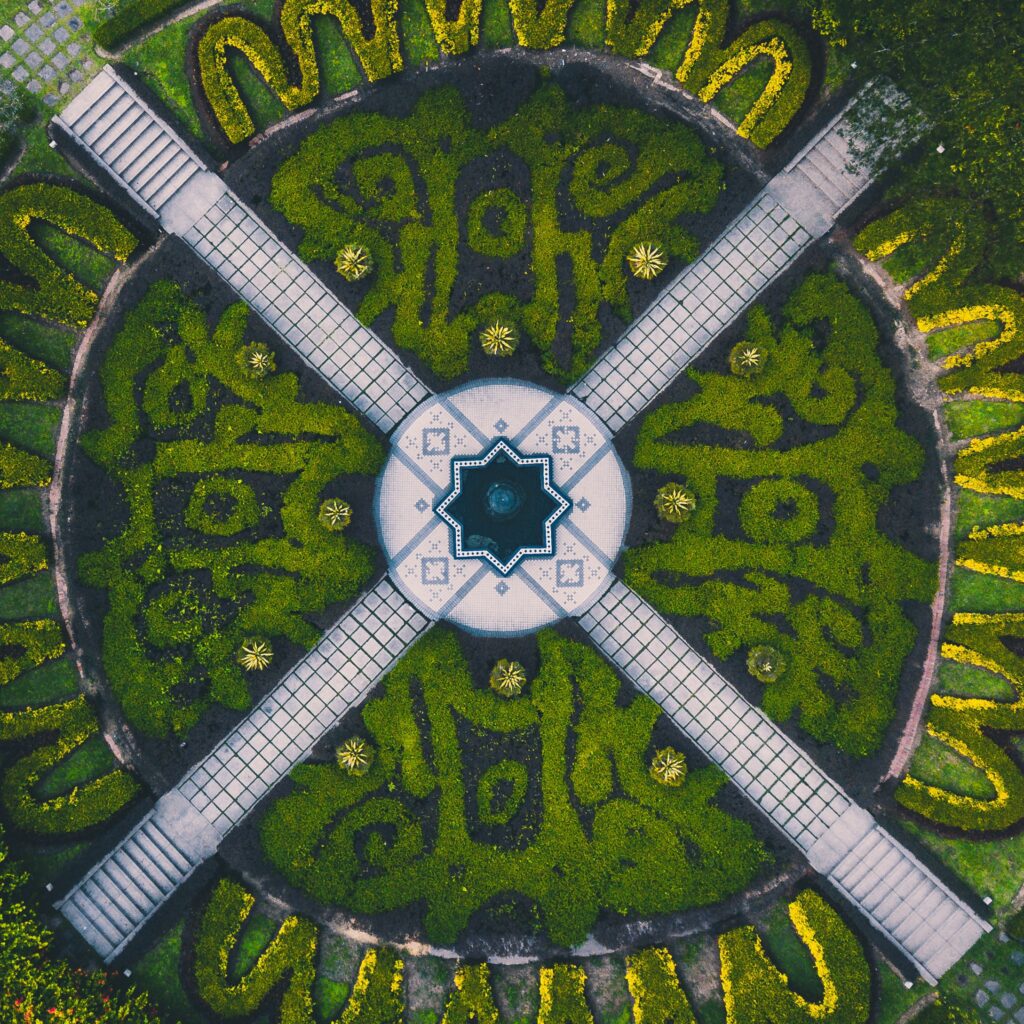
9. Perdana Botanical Gardens
Perdana Botanical Gardens is like an oasis in the middle of the city. It’s an amazing place to go for a walk and to get in touch with nature. The Gardens house an impressive collection of over 1,700 species of plants, including rare and endangered species. As you stroll through the gardens, you’ll encounter everything from ferns to palms and even an iguana or two!
The main attraction is the Orchid Garden which features over 800 species of orchids from all over the world. It’s beautifully landscaped and features a variety of water features, including fountains, ponds, and waterfalls. You can also grab some ice cream at the nearby souvenir shop!
Cost: Free
10. Bukit Tinggi
Located just an hour-drive away from Kuala Lumpur, Bukit Tinggi makes for an excellent day trip. Thanks to it being on top of a hill, you can enjoy refreshing weather and breathtaking scenery. You can’t miss the French-inspired Colmar Tropicale Village. This charming village looks like it has been plucked straight out of the French countryside, with its quaint architecture, cobbled streets, and picturesque surroundings. There’s also the Japanese Village, a beautiful garden that features traditional Japanese architecture, landscaped gardens, and a koi pond.
Cost: 14 RM (3 USD)
11. Islamic Arts Museum
As Islam is the official religion of Malaysia and with 63% of the population being Muslim, the Islamic Arts Museum is one of the best places to get to know Muslim culture in Malaysia. Showcasing Islamic art from all around the world in a stunningly beautiful building with over 7,000 artifacts, the museum is a treasure trove of Islamic art, calligraphy, ceramics, textiles, and more. You can explore the various galleries, each with a different theme, such as Islamic Architecture, Quran and Manuscripts, and Islamic Decorative Arts. The pieces on display are not only visually interesting, but they also provide insight into Islamic culture and history. Such as the Ottoman Room, which is a decorated room that was originally part of a mansion in Damascus, Syria.
Cost: 14 RM (3 USD)
12. Genting Highlands
Another day-trip from Kuala Lumpur with only about an hour’s drive from the city center. Genting Highlands offers amazing panoramic views of the country side. It’s known for its theme park but there are plenty of other activities to do here such as hiking through its lush forest trails. The main highlight is the iconic pagoda that overlooks the rest of the land from high above. Known as the Chin Swee Caves Temple, its named after the Buddhist monk (Qingshui) who has long been deified in the Fujian Province of China for his abilities to summon rain and subdue evil spirits. Inside the temple complex, you’ll find several other attractions such as a giant Buddha statue, a tea house, and a vegetarian restaurant amongst others.
Cost: Depends on the activities but the aforementioned temple is free
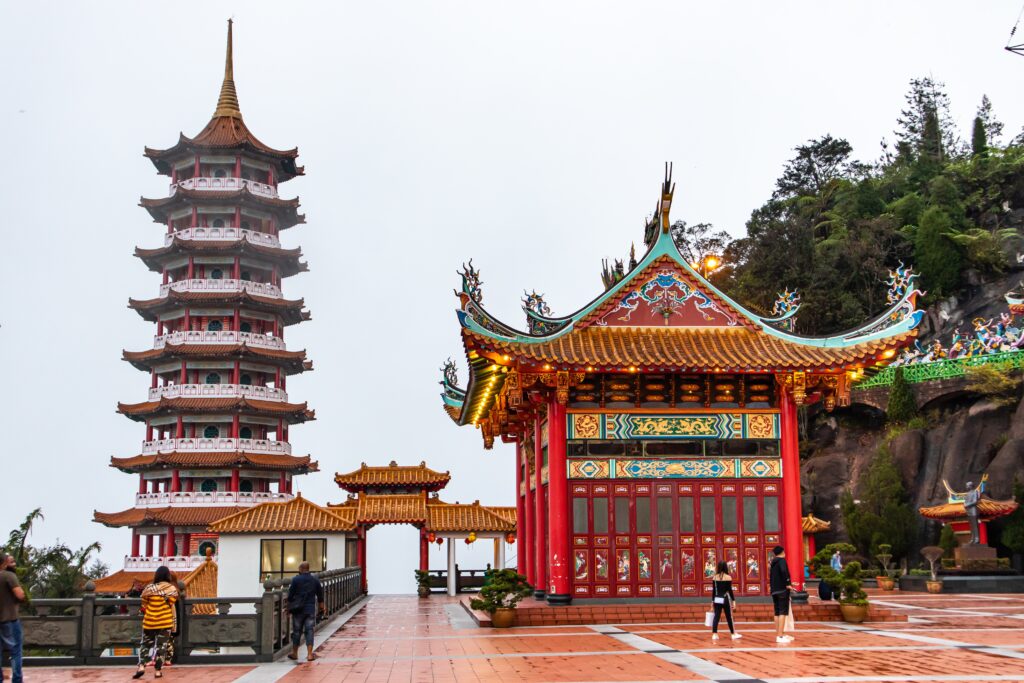
Top Things to Do in Kuala Lumpur
13. Do a Canopy Walk at KL Forest Eco Park
Kuala Lumpur is home to a range of natural parks and forests, and the KL Forest Eco Park is a great way to escape the concrete jungles. It spans over 200 acres, full of flora and fauna with several hiking trails that’s all within the city! I went here afterward with the same family I met at Istana Negara and I can say for sure that doing the canopy walk high above the forest was the main highlight. I also did some hiking trails and somehow find my way right in front of Menara KL Tower! Which brings us to…

14. Enjoy the City Skyline above Menara KL Tower
Seeing a city from a bird’s eye perspective is something I really never get tired of. I like to imagine how the city might have started and how it came to be today. The Skyview at Menara KL Tower offers the opportunity to do just that through its amazing observation deck with breathtaking panoramic views of the city at a height of 276 meters (900 feet). Something that I didn’t know before was that you can also opt for a package deal that includes admission to other attractions, such as the KL Forest Eco Park.
There’s also a revolving restaurant where you can enjoy a sumptuous meal while taking in the magnificent view of the city, a perfect recipe for an unforgettable dining experience!
15. Watch a Fountain Show at KLCC Park
KLCC Park is right at the base of the Petronas Twin Towers. One of the main sights to see here is the fountain show that takes place daily in the evening with synchronized water and light performances set to music. After a tiring day, why not unwind and relax while watching the fountain spurt out colorful water jets? Not to mention the magical views of the Petronas Twin Towers at night, all for free!
16. Take a Boat ruise on Putrajaya Lake
A boat cruise on Putrajaya Lake is a serene and scenic way to spend an afternoon or evening. Putrajaya Lake is a man-made lake located in Putrajaya, the administrative capital of Malaysia and it is just a short drive away from Kuala Lumpur. The lake is surrounded by lush greenery and modern architecture, making it a unique and picturesque destination. There are boat cruises at day or night, each offering their own charms though a night cruise sounds a bit more romantic with the city backdrop if I do say so myself.

17. Taste the Street Food at Jalan Alor
Can’t be a good trip without a food trip, Jalan Alor is a well-known food street that is known for its diverse and delicious street food. This bustling street comes alive at night with the aroma of sizzling meats and spices filling the air. You can find a wide variety of cuisine from various cultures such as Chinese, Malay, and Indian. Some of the must-try items include grilled seafood, satay, nasi lemak, and Hokkien mee.
18. Get Mesmerized by Fireflies
If you’re looking for a unique and unforgettable experience, why not take a trip to Kuala Selangor to see the mesmerizing fireflies? Located just about an hour’s drive from Kuala Lumpur, the Kuala Selangor Firefly Park gives you the opportunity to witness the enchanting sight of thousands of fireflies lighting up the night sky.
The best time to visit the park is after sunset, when the fireflies start to emerge and light up the mangrove trees along the Selangor River. You can take a boat ride along the river to get a closer look at the fireflies and experience the serene beauty of the surroundings.
Where to Stay in Kuala Lumpur
Kuala Lumpur is a fantastic metropolis with world class hotels. The hostels I recommend are also very chic and modern:
Best Hotels in Kuala Lumpur
- Astra @ Suite Platinum 2 KLCC – is a sustainable apartment with air-conditioned rooms, free WiFi and free private parking, a rooftop pool, fitness center, and a lift. The property also features full-day security, a sun terrace, and accommodation for disabled guests. The units have a fully equipped kitchen and a private bathroom with a walk-in shower and slippers.
- Summer Suites KLCC by Luna – a 4-star apartment, the air-conditioned rooms offer free WiFi, city views, and access to an outdoor pool, fitness room, and beauty services. The apartment has a lift, full-day security, and currency exchange. Units include a fully-equipped kitchen, seating area, flat-screen TV, and private bathroom. You can play billiards or use the indoor play area.
- Bukit Bintang Suite – located in Kuala Lumpur’s shopping district. The air-conditioned suites offer free WiFi, access to an outdoor pool, and some have a kitchenette and bathtub. Guests can enjoy dining and shopping options within a 2-minute walk, and there is also a fitness center, minimarket, and gift shop on site.
Best Hostels in Kuala Lumpur
- Amethsyt Dorm KLCC – it features an outdoor pool, fitness center, shared lounge, and kitchen, as well as a restaurant and 24-hour front desk. The air-conditioned rooms have a seating area, flat-screen TV, kitchen, and private bathroom with hairdryer, bidet, and shower. Bed linen and towels are provided.
- Chinatown Hostel by Mingle – is housed in a colonial building in Chinatown, offering accommodation with free WiFi and an in-house cafe. The air-conditioned private and dormitory-style rooms include lockers, personal lights, and power sockets. En suite or shared bathrooms provide shower facilities. The 24-hour front desk offers tour arrangements, luggage storage, and access to iMac desktop computers.
- Mingle Highstreet – featuring a garden, shared lounge, terrace, and restaurant. The hostel offers an outdoor swimming pool, shared kitchen, and free WiFi.
How to Get Around Kuala Lumpur
Train: Kuala Lumpur has an efficient train system known as the KTM Komuter, which covers most of the city’s popular destinations. There are also two rapid transit lines, namely the LRT (Light Rail Transit) and MRT (Mass Rapid Transit) that are connected to various parts of the city.
Bus: Another economical way of getting around Kuala Lumpur is by bus. The city has a well-connected bus network, including rapidKL buses and Go KL buses that cover most of the major attractions and landmarks.
Taxi: Taxis are readily available in Kuala Lumpur, and they are usually metered. However, you should always check that the meter is turned on to avoid being overcharged. I recommend using the ride-sharing app, Grab, instead. It’s quite cheap and convenient and I was using it a lot in the city.
Cycling: Renting a bike and going from landmark to landmark is also an excellent way to get around and see the city while having a lot of flexibility.
If you need to make any transfers out of Kuala Lumpur to other Malaysian cities, you can try out 12Go as they offer seamless bookings for plenty of transportation modes.
How to Stay Safe in Kuala Lumpur
Kuala Lumpur is a generally safe city, however as usual when traveling it’s important to take safety precautions to protect yourself. Be mindful of your surroundings and keep an eye on your belongings, especially in crowded areas or tourist hotspots. It’s also a good idea to have travel insurance in case of unexpected emergencies or medical issues. I recommend SafetyWing as they provide comprehensive support for us nomads.
Best Time to Visit Kuala Lumpur
Kuala Lumpur has a tropical climate, with distinct wet and dry seasons. The best time to visit Kuala Lumpur is during the dry season, which runs from May to August and December to February. During this time, the weather is sunny and pleasant, with average temperatures ranging from 27°C to 32°C (81°F to 90°F), and humidity levels around 70%. However, it’s worth noting that the peak season for tourism in Kuala Lumpur is during the months of June to August, so expect crowds and higher prices during this time.
The wet season on the west coast of peninsular Malaysia, where Kuala Lumpur is located, runs from March to April and September to November. During the wet season, rainfall can be heavy and prolonged, with occasional flooding. The average temperature during the wet season is around 27°C (81°F), with humidity levels hovering around 80%.
Plan Your Trip to Kuala Lumpur | Best Travel Resources
Book Your Accommodations
- Booking.com – the world’s leading online booking platform for accomodations around the world, they have an extensive amount of available listings with zero booking fees and best price guarantees.
- Hostelworld – a backpacker’s best friend, Hostelworld has the largest collection of hostels and guesthouses for affordable prices.
Don’t Forget Insurance
- SafetyWing – from Nomad Insurance, an insurance by nomads for nomads. They understand our lifestyle well and have really comprehensive and flexible plans that cater to any traveler.
Find Cheap Flights
- Kiwi.com – my go-to for booking and finding the cheapest flights and it’s helped me save tons of money. They do virtual interlining which is connecting flights from airlines that do not codeshare, so you can find routes that you wouldn’t be able to find normally.
Join Tours & Activities
- GetYourGuide – is one of the best places to find unique tours and activities. I found that it’s an excellent way to meet fellow travelers and create fond memories. They are not only limited to tours as they also offer niche services such as skip-the-line tickets or private transfers.
Catch a Ride
- Rentalcars.com – nothing beats the freedom of the road, Rentalcars.com is the world’s largest online car rental service. They operate across 160 countries so they’re the perfect partner to work with if you find yourself wanting a ride.

